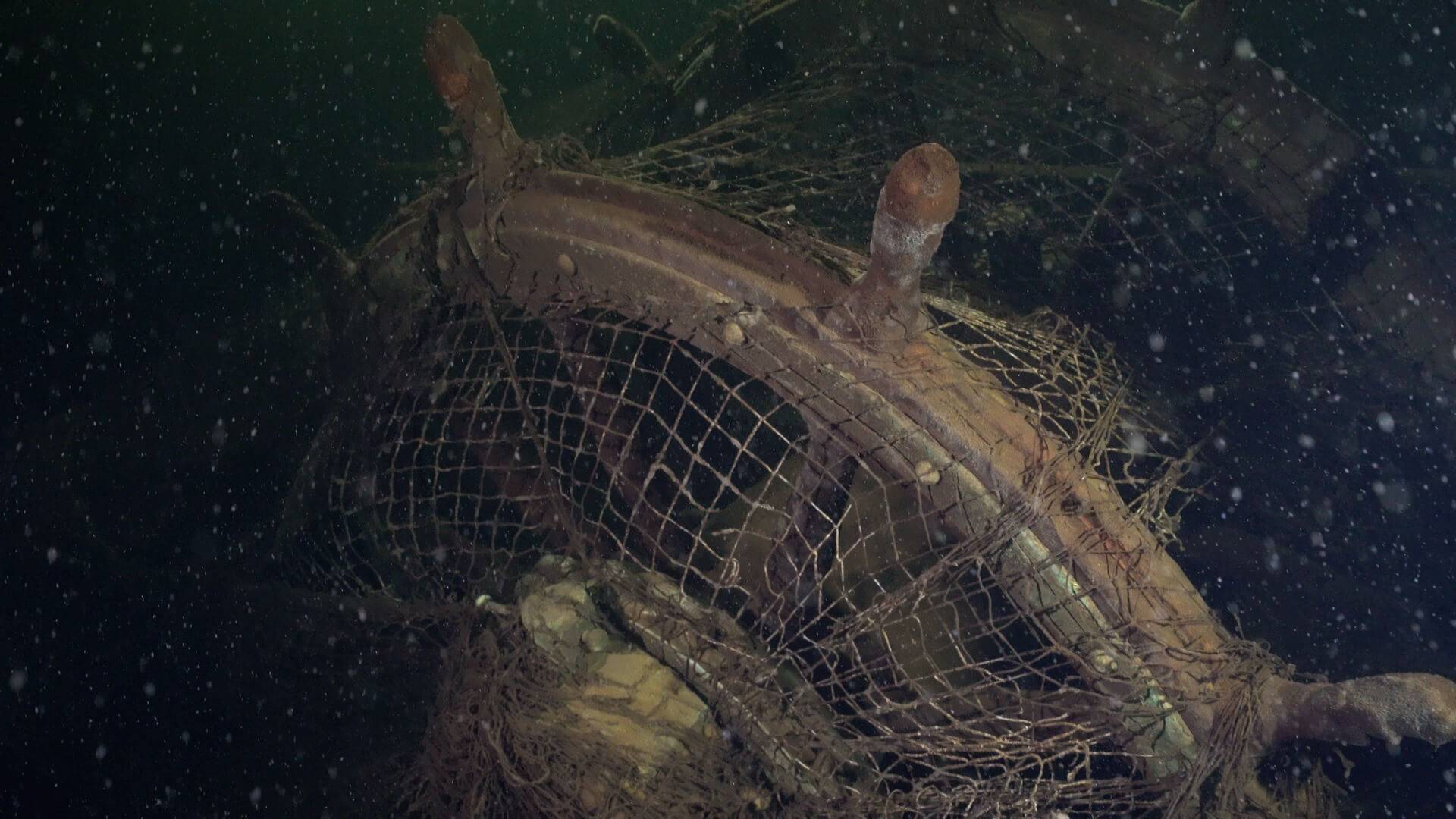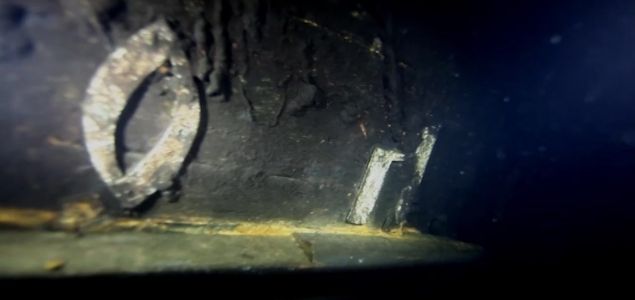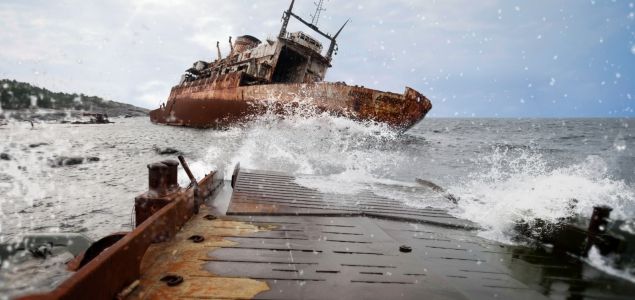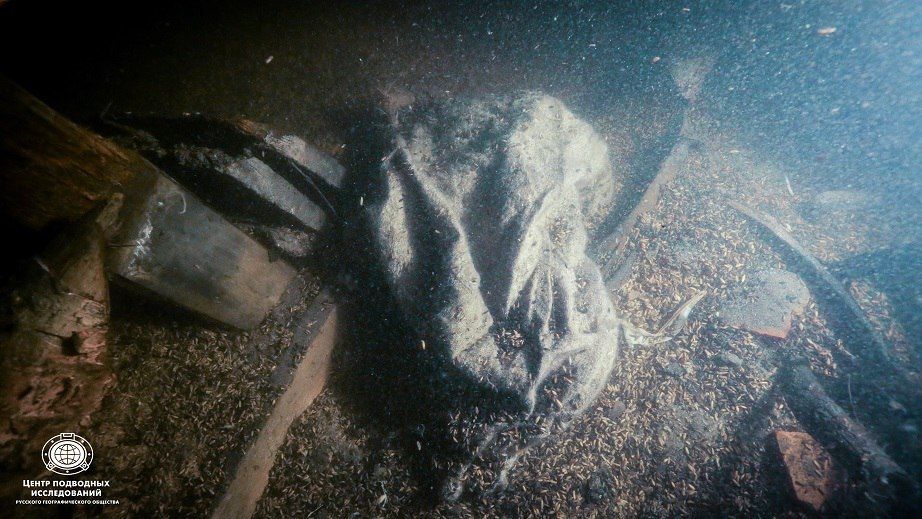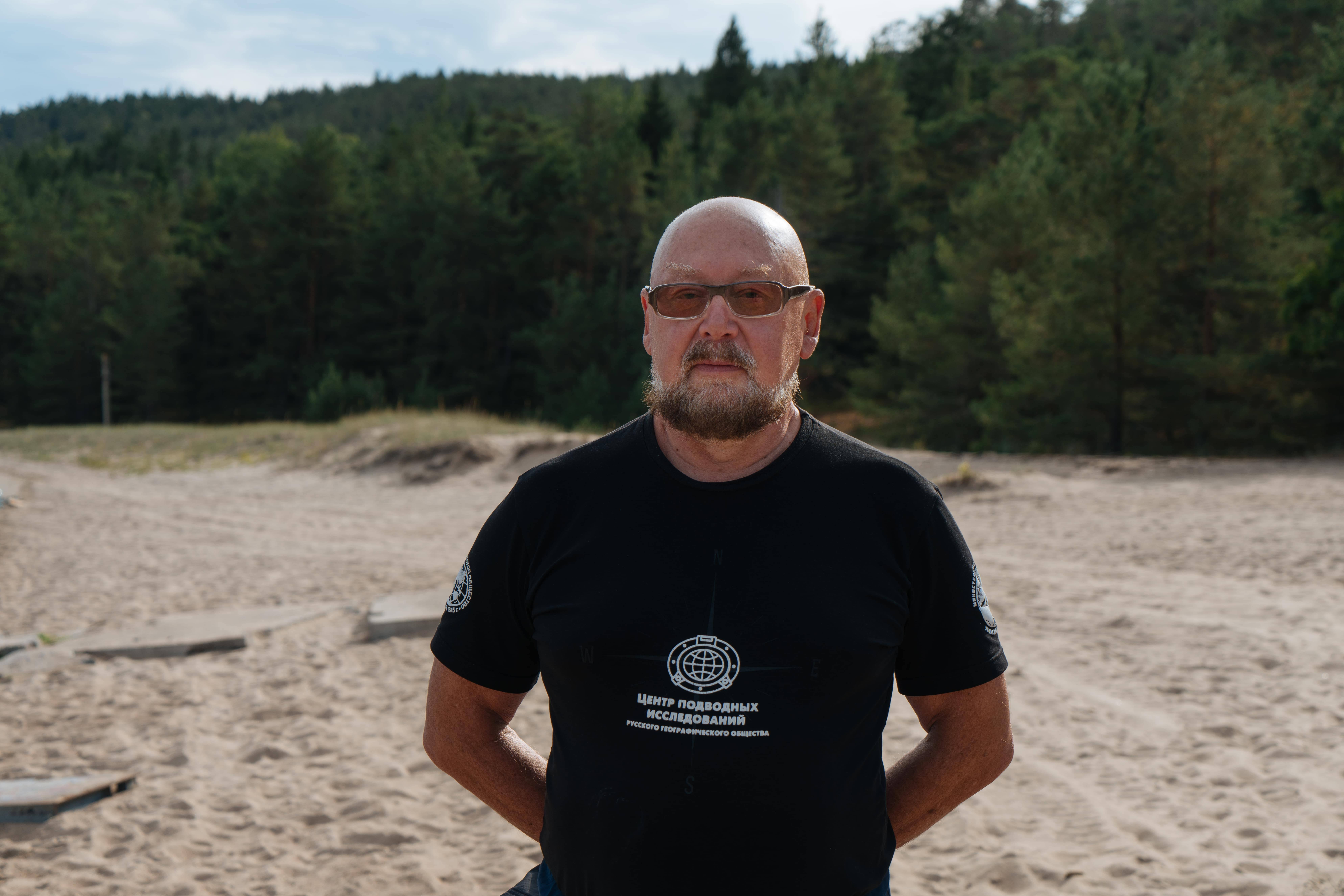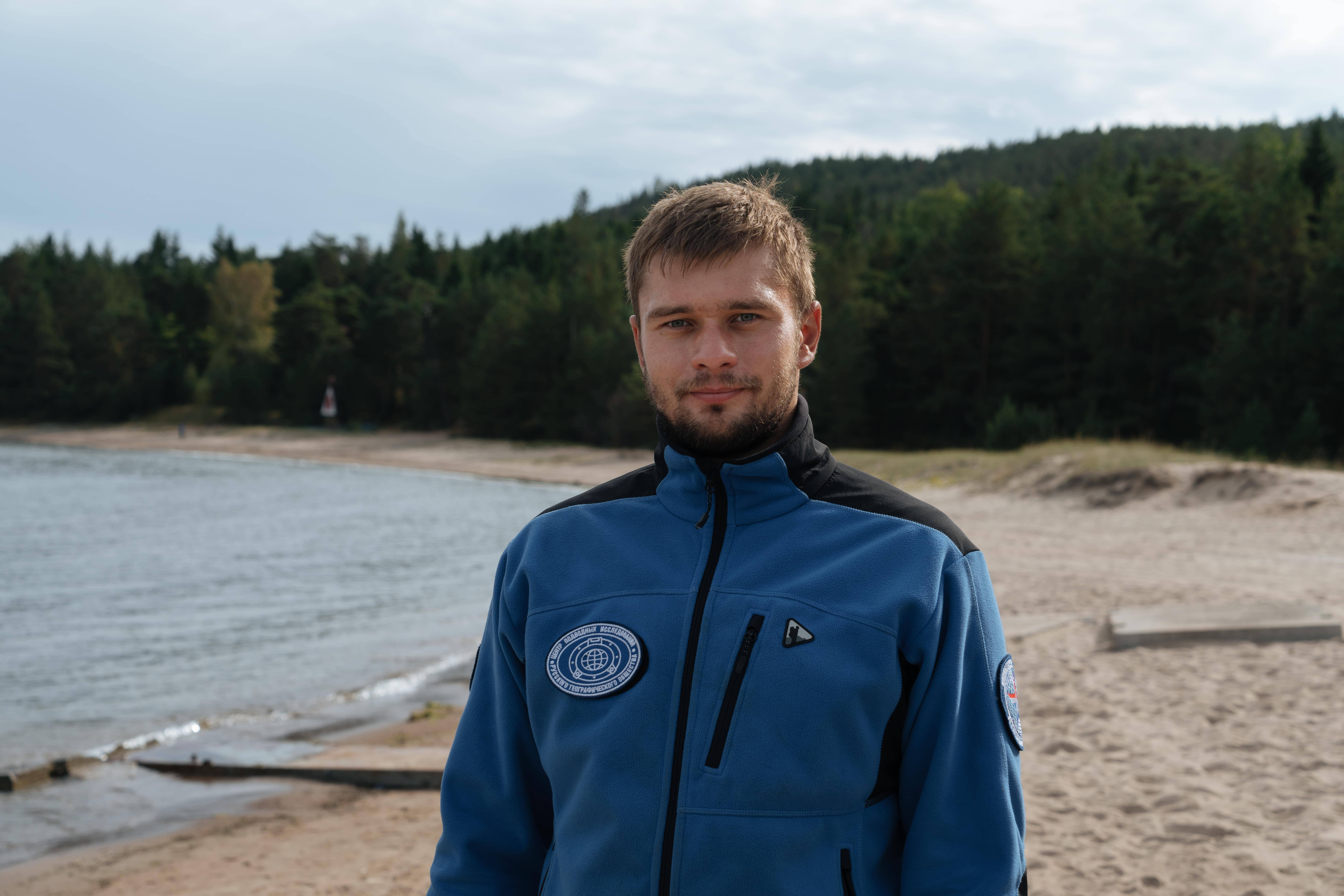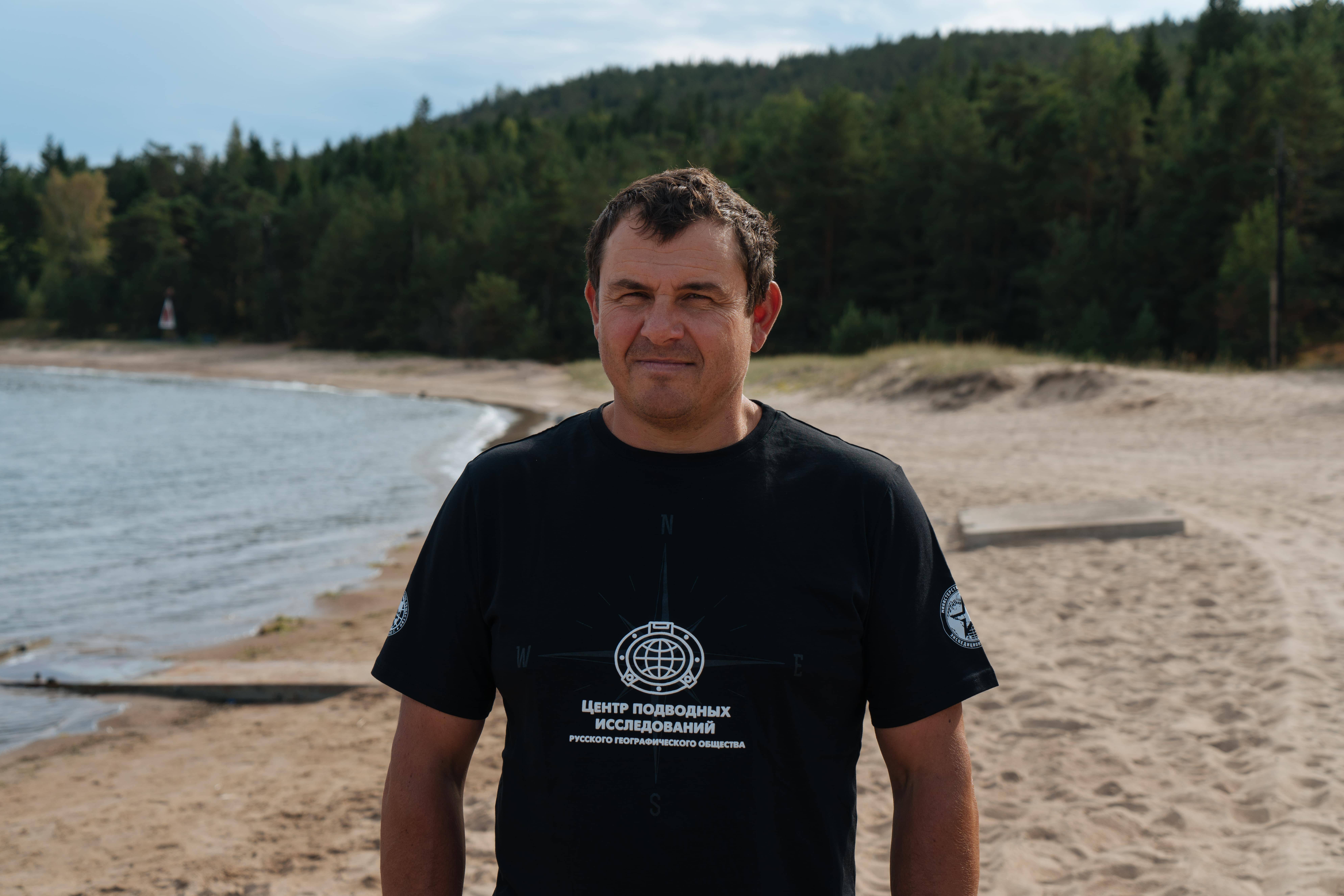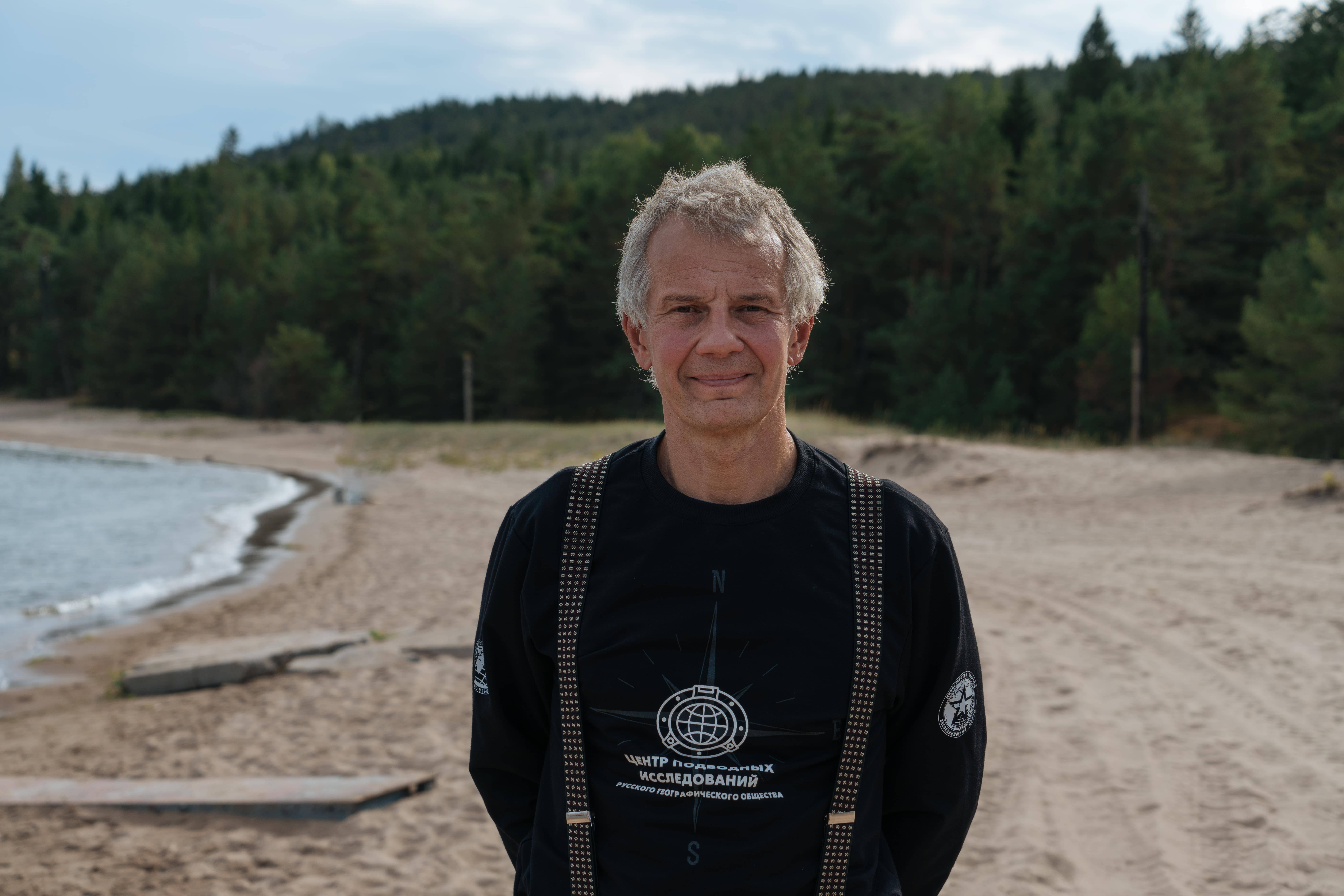Initially, we planned to explore the waters surrounding the following islands: Gogland, Sommers, and Bolshoy Tyuters with sonar equipment. Capricious Baltic weather wasn’t going to let everything go according to plan, still, this was generously compensated for by the sheer number of objects found around Gogland alone. During the mapping of the sites that we had divided the adjacent water area into, we had sifted through more than 15 km2. Our sonar equipment indicated there were 26 objects.
The outer islands of the Gulf of Finland are also called ‘the gates to the Baltic’. Since ancient times, ships would pass through the area, meaning both Russian and foreign ships would occasionally sink here. The archaeological finds of the “Gogland-2017” include 8 vessels, allegedly dated to the 19th century.
Some of them are just dilapidated hulls with some elements of the ship’s exterior preserved, and even intact figureheads. For instance, at the depth of 30m, divers discovered a female figurehead dressed in an eastern garb. Some are miraculously preserved vessels, resting on the keel. We found one just like it, a two-masted sailing vessel supposedly built in the second half of the 19th century. Despite spending 150 years 40m below the surface, it has been perfectly preserved.
Other objects that have already undergone initial examination by the divers, turned out to be fragments of ships that are already known to us. Thus, the destroyed bow of a wooden ship was allegedly identified as the remains of the Russian military vessel America, which, according to the archives, was lost in the area on November 18, 1856. The ship was the pride and joy of the Russian fleet; it is one of the only two vessels to complete two voyages around the world. Now, America rests under 30m of water.
But we have found vessels even more ancient than the ones we’ve just mentioned. In a 150x30m area, at the depth of 32m, the divers discovered the collapse and destruction of some individual parts. And during the photo and video activities, the divers found fragments of the hull typical of the pre-Petrine times. It is possible that a more detailed survey will make it possible to date the ship to the 17th century or earlier.
Much work had been done by divers on screw frigate Oleg, one of the most popular and beloved objects. Learn more about it at oleg.urc-rgs.ru
But let’s get back to the 20th century. During the Great Patriotic War, active hostilities raged around the outer islands of the Gulf of Finland. Sonar specialists discovered the remains of the hull of the Finnish patrol VMV-type vessel. We are aware of the fact that two such vessels had been attacked here on September 15, 1944. We have also found the German high-speed landing craft that was sunk on the same day.
Our researchers paid particular attention to the objects associated with the 1941 naval evacuation of Tallinn (Learn more about the naval evacuation of Tallinn at goglandvov.urc-rgs.ru). Our divers discovered and explored another military vessel, ВТ-550 (formerly Siualiai). The vessel was damaged during the evacuation of the Baltic Fleet and towed to one of the Gogland coves. It was used for coal bunkering until June 1942 when the Soviets torpedoed the vessel and left the island.
In a different area around Gogland, our divers discovered Baltic Fleet’s Hammer and Sickle, a floating workshop, its hull now resting 9m below the surface.
This year was our first time coming along on a joint expedition of the Expeditionary Center of the Ministry of Defense of the Russian Federation and the Russian Geographical Society. We have now set a lot more tasks and objectives for our diving and hydroacoustic surveys at the next year’s expedition. Exploring the waters surrounding Gogland, Bolshoy Tyuters and Sommers takes much more than a single expedition. Check out the news from the outer islands of the Gulf of Finland in 2018!







